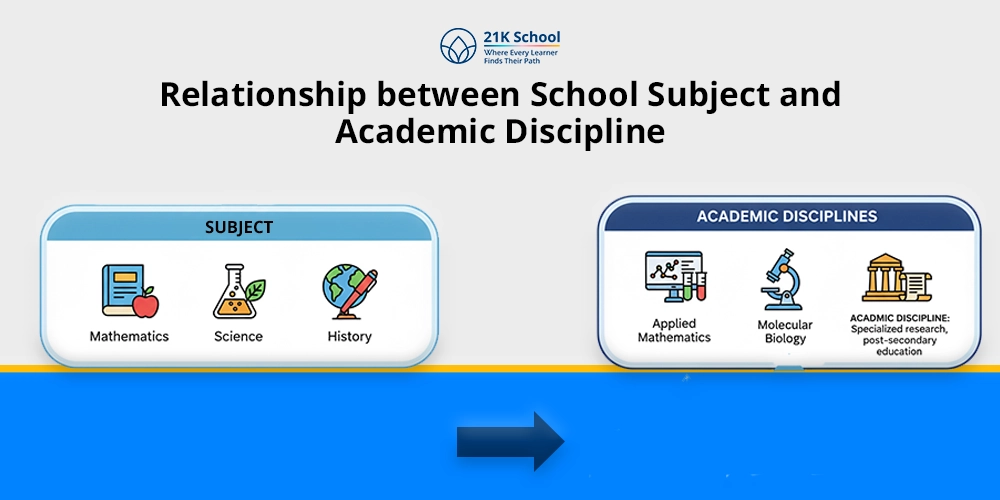
Student leadership in elementary schools involves young learners taking on decision-making roles in their classroom or school.
These roles could include classroom monitors, team leaders, head girl/head boy or student council members.
At this age, leadership is not about authority but responsibility, communication, cooperation, and initiative. It shows them that leadership involves service, empathy, and taking the lead towards a better tomorrow.
Contents
- Key Leadership Qualities to Nurture in Elementary Students
- Benefits of Student Leadership in Elementary Schools
- Elementary Student Leadership Activities
- Challenges in Promoting Leadership at a Young Age
- Leadership in Elementary School Sets the Stage for Future Success
- Conclusion: Empowering Young Minds to Lead Today
Key Leadership Qualities to Nurture in Elementary Students
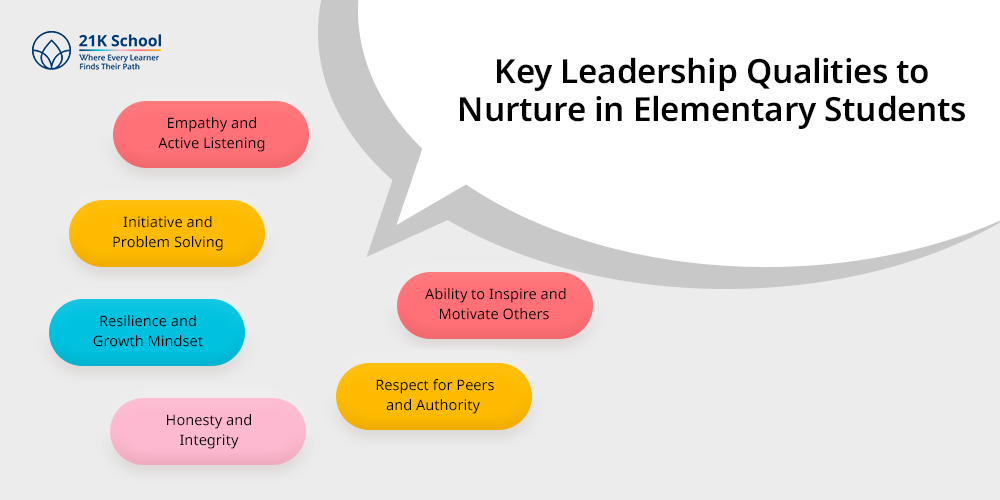
Encouraging leadership in elementary-aged students can happen by developing skills in communication, empathy, solidarity, and problem-solving.
Such skills, when paired with initiative, responsibility, and a growth mindset, will help children grow into effective leaders.
1. Empathy and Active Listening
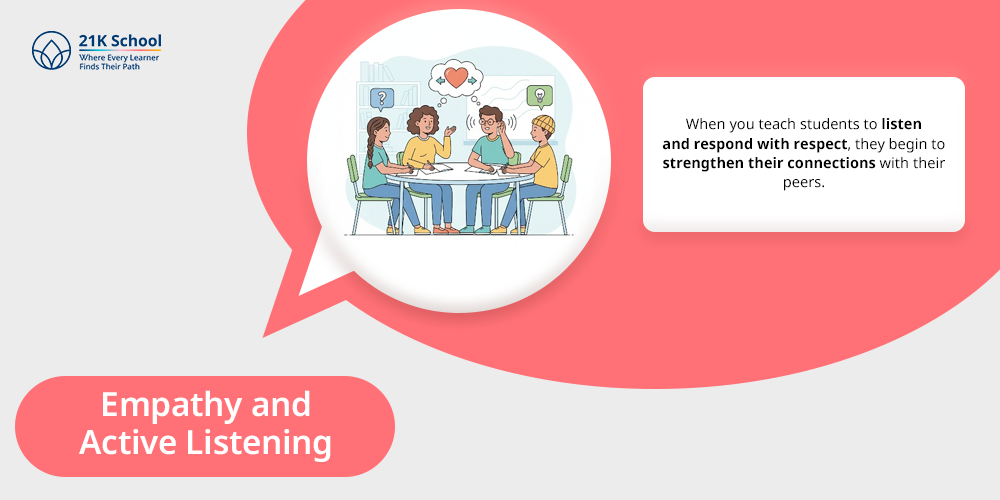
Teaching empathy helps students recognise that there are different viewpoints in the world, and encouraging active listening highlights the importance of valuing the thoughts and feelings of others.
When you teach students to listen and respond with respect, they begin to strengthen their connections with their peers.
2. Initiative and Problem Solving
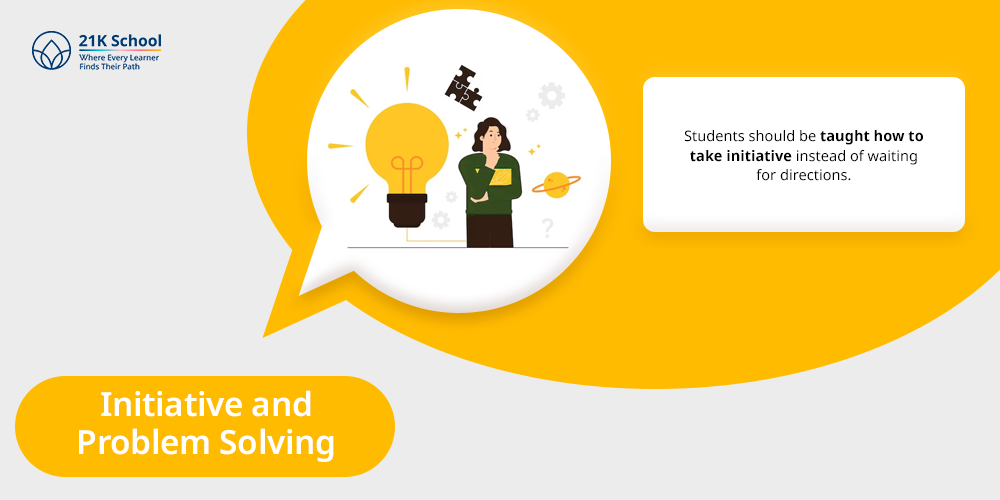
Students should be taught how to take initiative instead of waiting for directions.
They should also be encouraged to think critically about solutions to any problems; whether it is organising a class task or working through a conflict on the playground, the power of initiative helps them act.
This develops their problem-solving and analytical skills as well.
3. Resilience and Growth Mindset
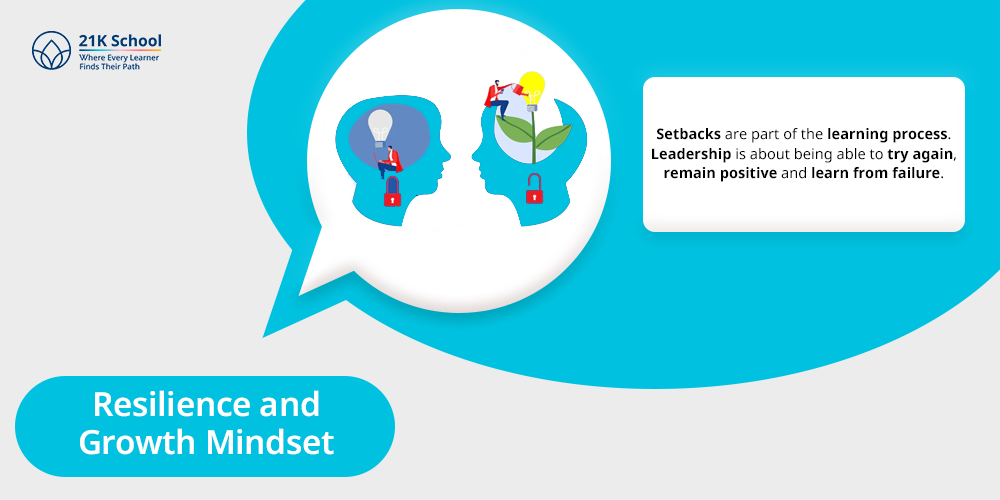
Setbacks are part of the learning process. Leadership is about being able to try again, remain positive and learn from failure.
With resilience, a student will have the strength to regain their motivation when disappointed and renew their perseverance in the face of adversity.
4. Honesty and Integrity

At the core of leadership is honest communication and acting with integrity. Students should learn the importance of truth and fairness. This builds trust between peers and their teachers.
5. Respect for Peers and Authority
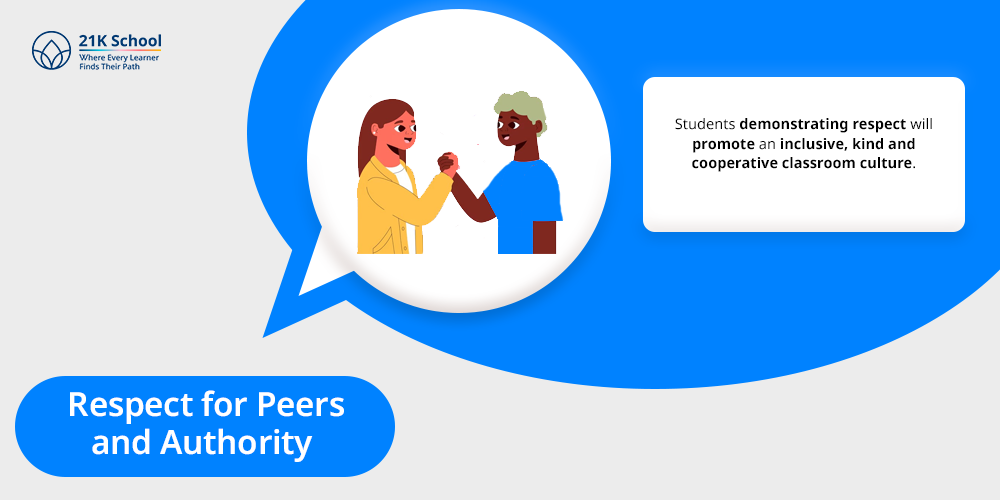
A good leader respects others, be it a classmate or a teacher. Students demonstrating respect will promote an inclusive, kind and cooperative classroom culture.
6. Ability to Inspire and Motivate Others
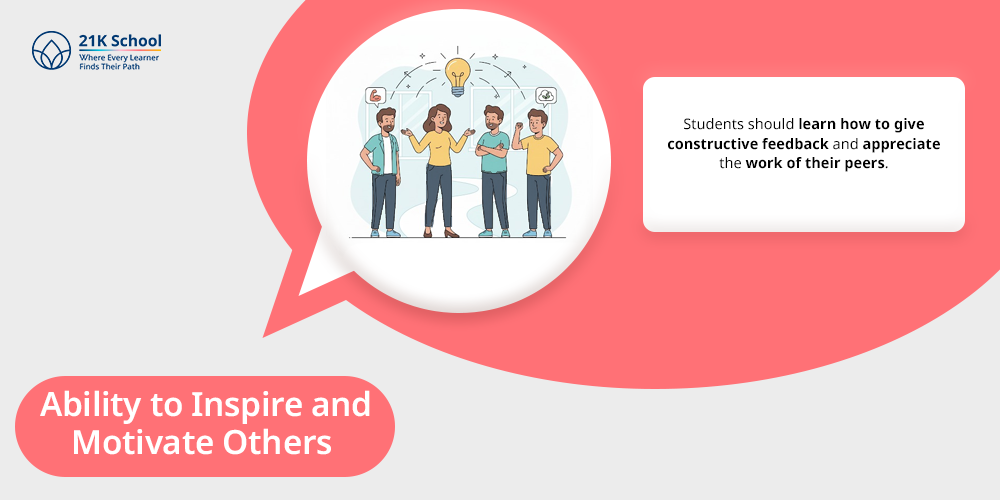
A way to lead is to encourage and support others. This creates a positive learning environment that will inspire and motivate everyone.
Students should learn how to give constructive feedback and appreciate the work of their peers.
Benefits of Student Leadership in Elementary Schools
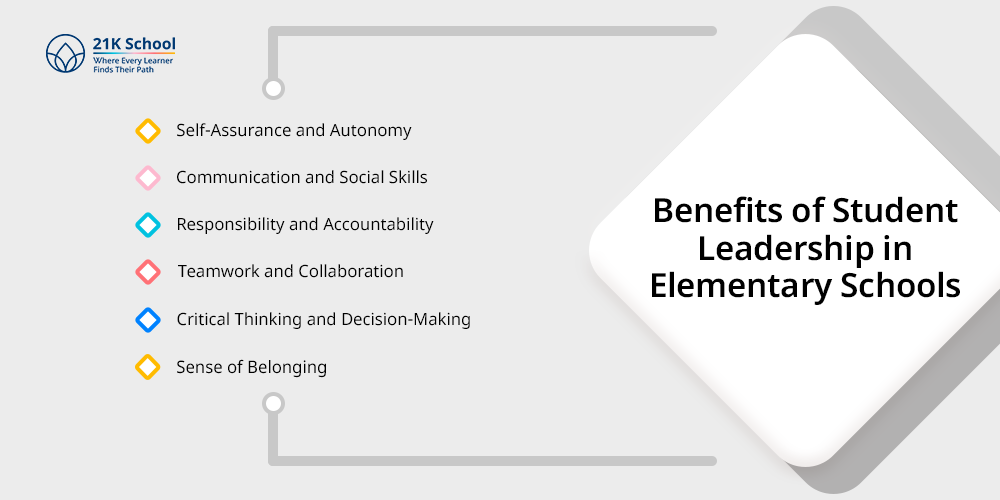
Student leadership in elementary schools provides several benefits, such as social-emotional development, learning important interpersonal skills, and preparing students for future challenges.
This instils collaboration, problem-solving and communication skills as well as building confidence , self-worth and responsibility.
1. Self-Assurance and Autonomy
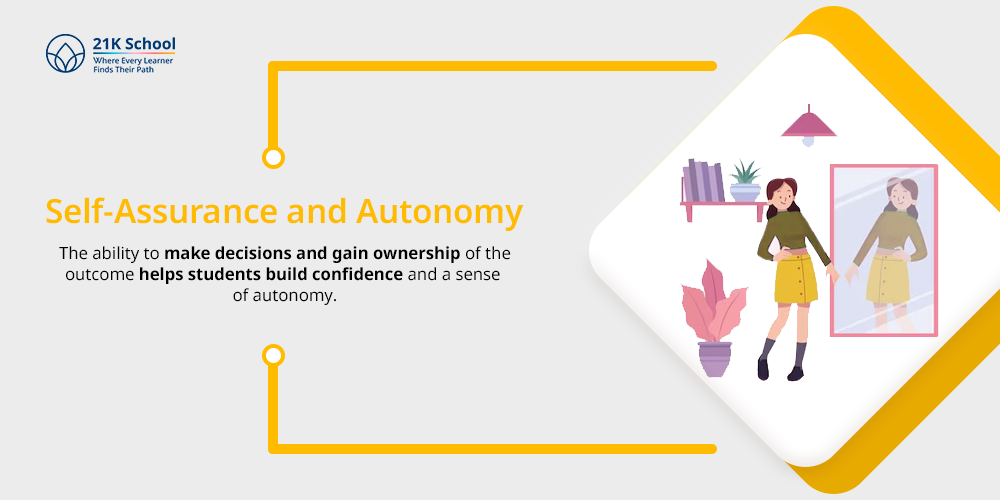
Taking on a leadership position provides a sense of satisfaction and achievement. The ability to make decisions and gain ownership of the outcome helps students build confidence and a sense of autonomy.
Students feel they can act, make decisions, and become more self-sufficient in their everyday lives.
2. Communication and Social Skills
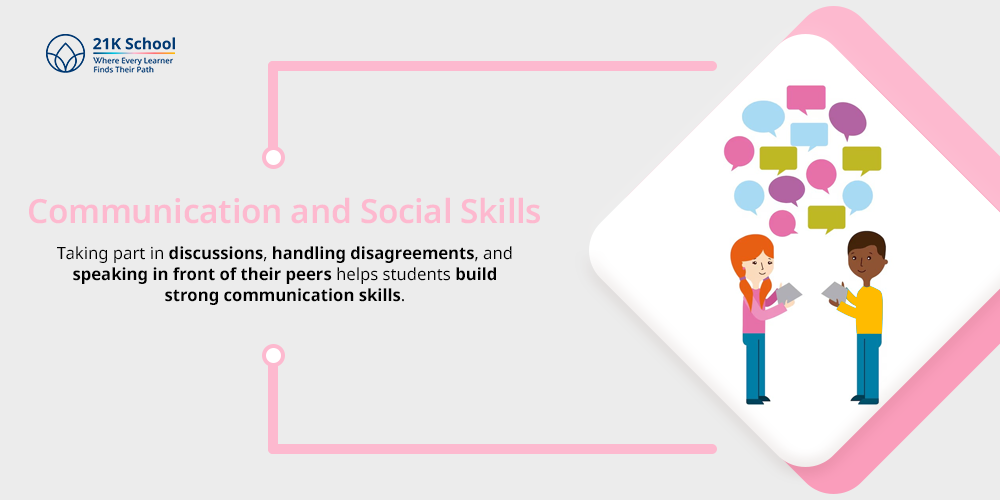
Taking part in discussions, handling disagreements, and speaking in front of their peers helps students build strong communication skills.
In their experiences with leadership roles, students learn to express their points of view in straightforward terms, listen actively, and adjust their communication style accordingly.
3. Responsibility and Accountability
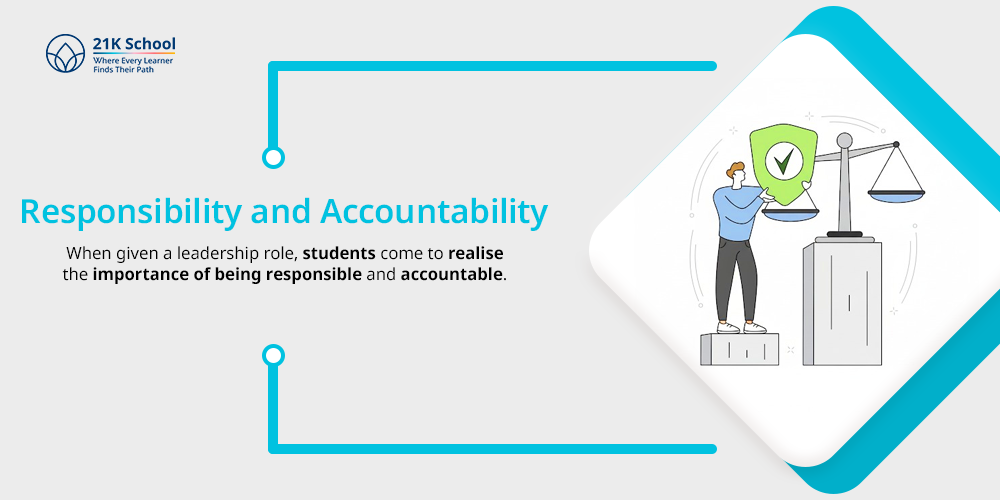
When given a leadership role, students come to realise the importance of being responsible and accountable.
They develop skills such as time management, completing tasks, and owning up to the consequences of their actions.
4. Teamwork and Collaboration

Students learn how to collaborate, sharing ideas, negotiating, and working toward a common goal.
They cultivate a sense of collective responsibility and understand that collaboration often yields better results than individual work.
5. Critical Thinking and Decision-Making
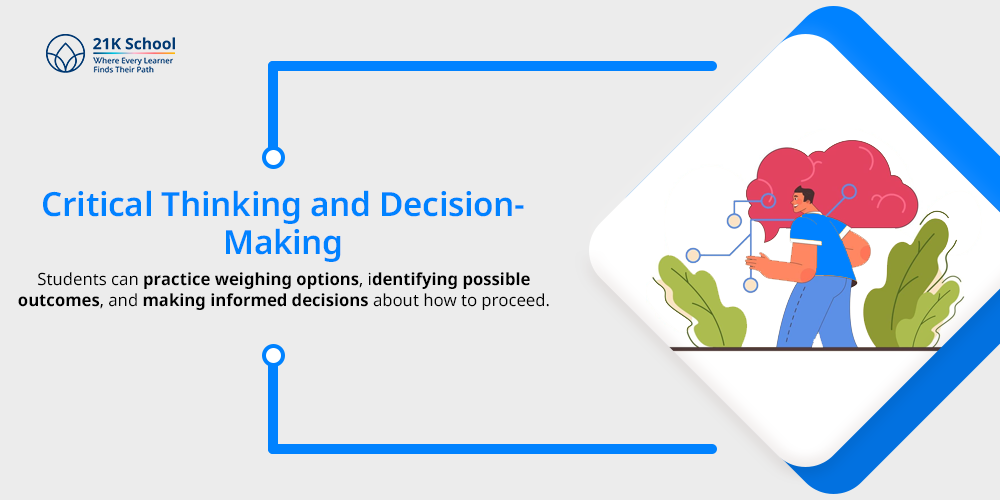
Many leadership tasks involve problem-solving. Students can practice weighing options, identifying possible outcomes, and making informed decisions about how to proceed.
Leadership roles build their ability to think critically and prepare them for strategic planning.
6. Sense of Belonging
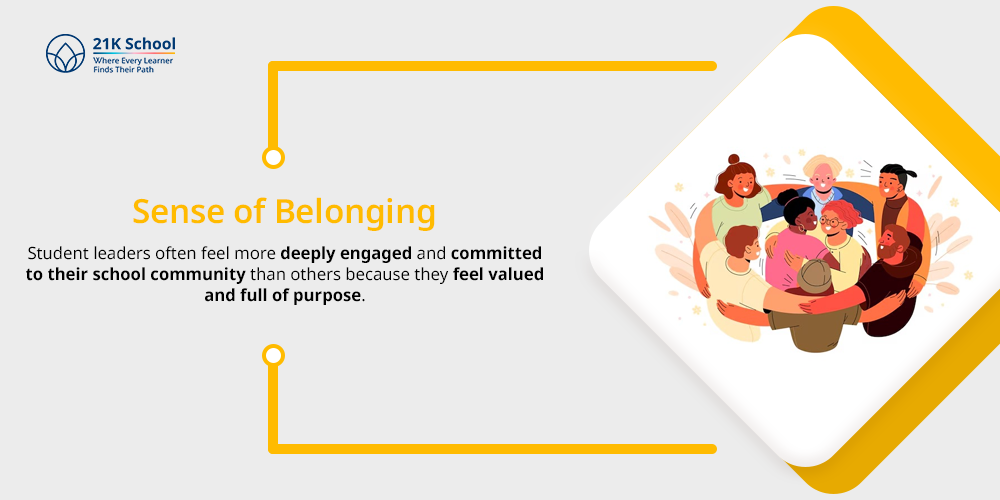
Student leaders often feel more deeply engaged and committed to their school community than others because they feel valued and full of purpose.
The same feeling of belonging also has the potential to improve their overall wellness and success as students.
Elementary Student Leadership Activities

- Hands-on activities: are vital for developing young learners’ leadership skills. Here are some examples of how to integrate leadership activities into everyday class life:
- Classroom jobs: Assign children rotating responsibilities such as line leader, materials monitor, or attendance helper.
- Peer mentors: Pair older students with younger ones, specifically as reading buddies or for help with homework.
- Student councils: Age-appropriate governance programs where children help suggest ideas or lead events.
- Group projects: Allowing students to take turns being team leaders.
- Public speaking activities: Storytelling, presentations, and playing the part of a news reporter for the class.
- Service projects: Getting students to help improve the school, such as community service or documenting things they do that help others.
- Conflict resolution boards: Educate students on how to analyse and mediate their peers’ conflict situations when intervention or support is necessary.
Know about key leadership roles in school for students.
Challenges in Promoting Leadership at a Young Age
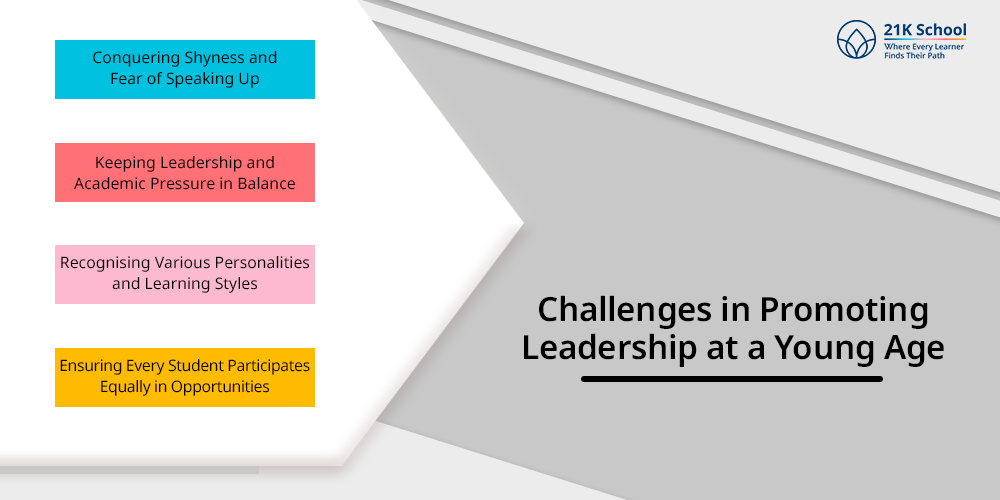
Encouraging leadership during the early stages presents distinct challenges related to credibility, experience, and social norms.
A young leader may struggle to earn respect from both their peers and seasoned leaders within the organisation.
Frequently, there is a correlation between age and experience that they must learn to navigate.
They often find themselves in the public eye, and if they are thrust into performing without the chance to grow, it can lead to increased anxiety about their performance.
1. Conquering Shyness and Fear of Speaking Up
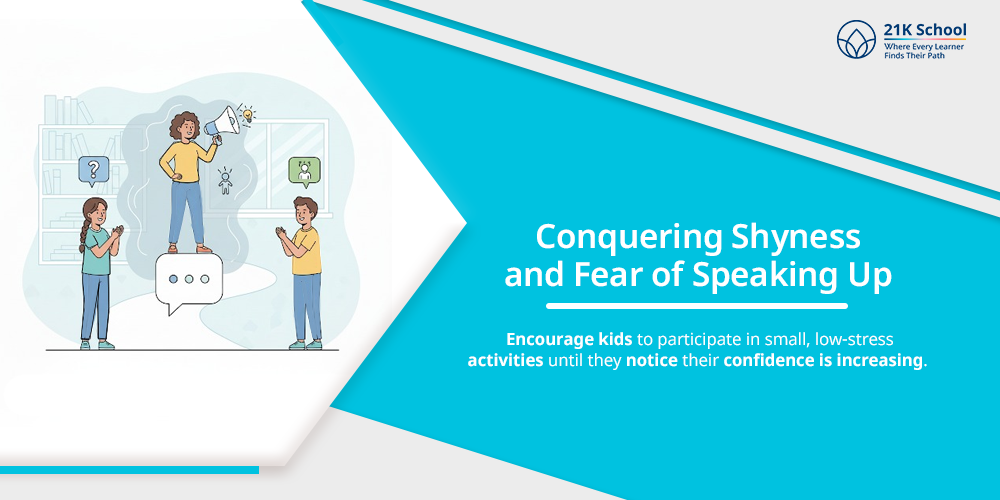
Encourage kids to participate in small, low-stress activities until they notice their confidence is increasing. Gradually incorporating leadership roles can help even the quietest student develop their voice.
2. Keeping Leadership and Academic Pressure in Balance

Leadership not only complements the academic world, but it enhances students by helping them focus, stay motivated, and be accountable.
When students feel empowered, they are often more willing to learn.
3. Recognising Various Personalities and Learning Styles
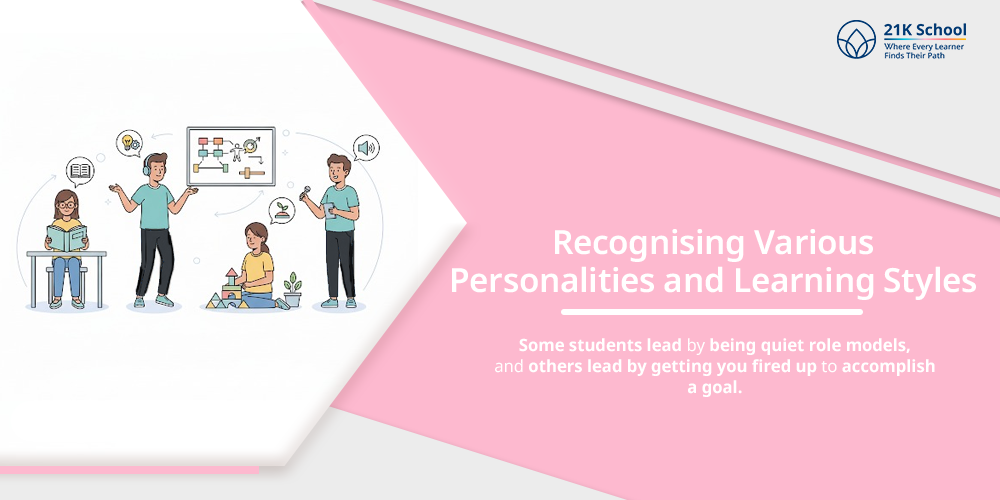
Not every child demonstrates their leadership style in the same way. Some students lead by being quiet role models, and others lead by getting you fired up to accomplish a goal.
Recognising the different ways students can demonstrate leadership allows you to create an inclusive environment for every student.
4. Ensuring Every Student Participates Equally in Opportunities

Every student must have equal access to leadership opportunities, regardless of their upbringing, ability, or academic level.
Inclusivity creates a fairer and more empowering environment. We should all be committed to considering barriers or concerns that may restrict students from participating and leading.
Here are strategies to develop leadership qualities in students.
Leadership in Elementary School Sets the Stage for Future Success
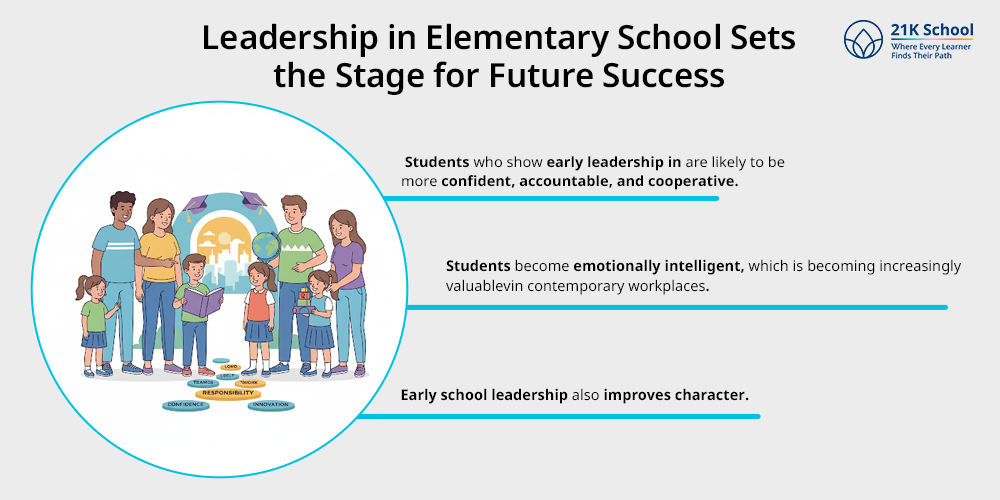
The habits and mindset developed through early leadership will transfer to any stage of their life.
- Students who show early leadership in elementary school are likely to be more confident, accountable, and cooperative students in middle and high school and will likely take more initiative towards academic responsibilities, extracurriculars, and their friendships.
- In addition, students become emotionally intelligent, which is becoming increasingly valuable in contemporary workplaces. They will learn how to work alongside others, resolve conflicts, and adjust to changes.
- Early school leadership also improves character. Students will learn to advocate for themselves and others, recognise what they do well, and attempt to make a positive difference in the world.
Together, these qualities construct a strong foundation for their future potential in society.
Conclusion: Empowering Young Minds to Lead Today
Student leadership in elementary school encompasses much more than titles and tasks; it supports the philosophy of lifelong learning.
By fostering the skills of leadership from an early age, we can help nurture our students to become confident, capable and caring leaders in all aspects of their lives.
Given the right conditions to flourish, young learners of today can become the leaders of tomorrow.

